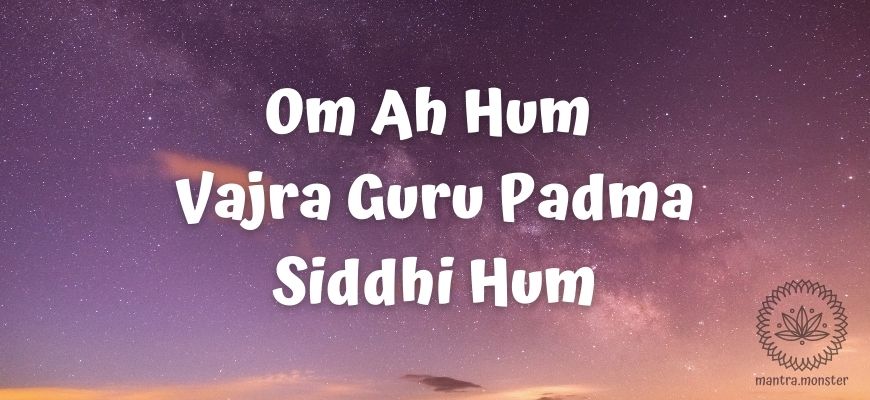„This mantra is the very heart essence of Guru Rinpoche. It is also the mantra of all the yidams, dakas, dakinis, masters, buddhas, and protectors. When you chant the mantra, you are invoking the very embodiment of Guru Rinpoche.” – Sogyal Rinpoche’s quote.
Guru Padmasambhava literally means „Lotus-born”, which hints to Guru Rinpoche’s birth from a lotus in the land of Oddiyana (a small country in early medieval India). Padmasambhava, the „Precious Master”, is the founder of Buddhism in Tibet and the second Buddha of our time.
Whereas Gautama Buddha is known primarily for having taught the spiritual teachings of the sutra vehicle, Guru Padmasambhava came here, into this world, and to Tibet in particular, in order to teach and initiate the tantras.
More importantly, Buddha Gautama Shakyamuni exemplifies the Buddha principle, an important element in the sutrayana spiritual path, Guru Rinpoche embodies the guru principle, the center of Vajrayana Buddhism tradition in Tibet, and Guru Rinpoche is respectively known as the „second Buddha”.
Mantra lyrics in Sanskrit:
Om Ah Hum Vajra Guru Padma Siddhi Hum.
Mantra lyrics in Tibetan:
Om Ah Hung Benza Guru Pema Siddhi Hung.
Vajra Guru Mantra meaning:
- OM AH HUM these three syllables combine represents the sublime essence of the principles of enlightened mind, body, and speech;
- VAJRA this Sanskrit word represents the sublime essence of the indestructible family;
- GURU this word has a literally meaning of the sublime essence of the jewel family;
- PADMA this word represents the sublime essence of the lotus family;
- SIDDHI this word represents the sublime essence of the activity family;
- HUM this is the last syllable of this potent mantra and represents the sublime essence of the transcendent family.
More information:
- OM is a seed mantra, according with some scholars is the primordials sound of the univeerse, signify the perfect splendor and richness of sambhoghakaya;
- AH the second syllable of the mantra signify the total unchanging perfection of dharmakaya (reality body), the manifest body of absolute reality;
- HUM the third syllable of the mantra signify the presence of Guru Padmasambhava as the nirmanakaya (physical body of a Buddha), the manifest body of emanation;
- VAJRA this word signify all the heruka deities of the mandalas;
- GURU this ancient word signify the root and energetical transmission of gurus and the holders of intrinsic awareness;
- PADMA this word, in this mantra, signify the assembly of dakas and dakinis;
- SIDDHI this word signify the life force (prana) of all the wealth the guardians and deities of the treasure teachings (dharma);
- HUM this syllable signify the life force (energy) of the dharmapalas, the protective deities.
 Chanting Vajra Guru Mantra benefits:
Chanting Vajra Guru Mantra benefits:
„For the profound practice of approach it is commonly said that one should recite this potent mantra of Padmasambhava 1,200,000 times. If we can accomplish these recitations (with a sincere heart), it is said that we will receive the blessing of Guru Padmasambhava.
It is also acknowledged, „with ten million siddhis, you will reborn in a place of vidyadharas (literally means wisdom-holders).” Therefore, this actually means if you practice this mantra (with correct pronuntiation) 10 million times, you will be reborn in a place of vidyadharas”.
Trulshik Rinpoche continued – ”It is even said that if you recite the 1,200,000 accumulation 7 times, you will become the same as Guru Rinpoche in the present very life”.
“More importantly, reciting the mantra 10 million times, you will reach the stage from which you can never turn back. So the benefits of chanting this mantra regularly are truly inconceivable.” – Trulshik Rinpoche’s quote.








